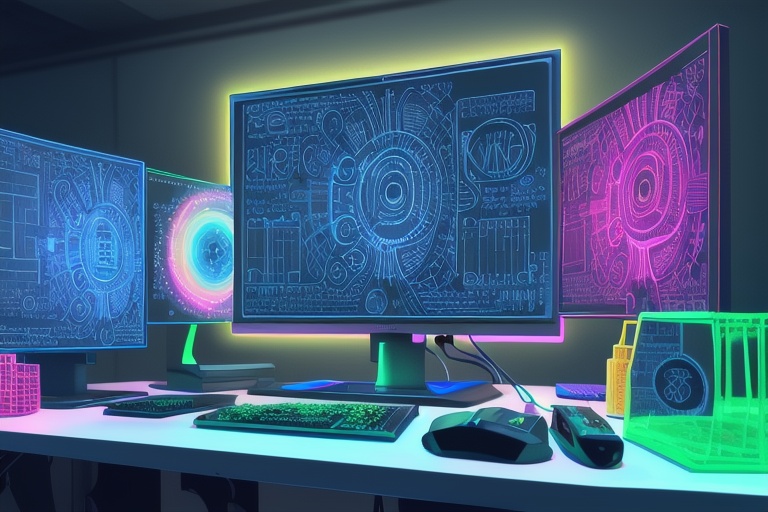The rapid advancement of artificial intelligence (AI) is transforming the technological landscape and challenging long-standing legal and ethical norms. One such challenge comes from the intersection of AI and patent law, particularly concerning the attribution of inventorship to AI systems. A landmark case that exemplifies this challenge is Thaler v. Vidal, in which the U.S. federal appeals court ruled that an AI system cannot legally be considered a named inventor on a United States patent. The implications of this ruling are far-reaching and have sparked a crucial debate on the modernization of inventorship policies and the adaptability of our current legal system to the realities of AI-driven innovation.
The rapid advancement of artificial intelligence (AI) is transforming the technological landscape and challenging long-standing legal and ethical norms. One such challenge comes from the intersection of AI and patent law, particularly concerning the attribution of inventorship to AI systems. A landmark case that exemplifies this challenge is Thaler v. Vidal, in which the U.S. federal appeals court ruled that an AI system cannot legally be considered a named inventor on a United States patent. The implications of this ruling are far-reaching and have sparked a crucial debate on the modernization of inventorship policies and the adaptability of our current legal system to the realities of AI-driven innovation.
The Case of AI Inventorship
At the heart of the debate is the case of Dr. Stephen Thaler, who attempted to file patent applications in 2019 with the U.S. Patent and Trademark Office (PTO) naming his AI system, DABUS (Device for the Autonomous Bootstrapping of Unified Sentience), as the inventor. The PTO rejected the applications, citing the lack of a human inventor. Thaler's subsequent legal challenge was not successful; the district court and the U.S. Court of Appeals for the Federal Circuit both maintained that under the U.S. Patent Act, an "inventor" must be an individual, which translates to a human being.
Legal Interpretation and International Perspective
The term "inventor" in the U.S. Patent Act is interpreted based on centuries-old precedent, with historical language framing the inventor as a natural person or persons. Referencing this, the court contended that AI systems, regardless of their sophistication, fall outside the definition of a natural person. Thus, they cannot hold the legal status of an inventor. This perspective is not unique to the United States; other jurisdictions, including the United Kingdom, Europe, Australia, and Germany, have similarly denied patents that do not designate a human inventor.
The Broader Policy Questions
The ruling against AI inventorship illuminates several policy concerns and legal considerations. As AI capabilities burgeon, the traditional notion that only humans can conceptualize and invent may be challenged by AI systems that can autonomously generate novel and potentially patentable ideas. This exclusion of AI from inventorship risks stifling innovation by not recognizing AI's unique potential to contribute to technology. Conversely, recognizing an AI as an inventor poses questions of accountability, intellectual property ownership, and the moral implications of AI in the creation process.
Balancing Innovation and Intellectual Property Rights
The dilemma runs deeper than legal definitions; there is an ethical and policy layer that must be addressed. If we permit AI to be named as inventors, it becomes complex to determine who holds the patent rights for AI-generated inventions. Moreover, how do we address the compensation and attribution for ideas or creations that originate from an AI source? These questions touch on the foundational principles of patent law, which are meant to encourage innovation while providing a framework for property rights and economic incentives.
Charting the Future of AI Inventorship
Moving forward, it is imperative to foster a dialogue that includes policymakers, legal professionals, and those deeply versed in AI technology. Addressing the concerns related to AI inventorship requires drafting guidelines and policies that respect the nuanced capabilities and limitations of AI systems, while ensuring that the principles of intellectual property are upheld. The focus should be on crafting policies that incentivize innovation and address the complex agency of AI in the invention process, without compromising the ethical and legal standards that govern inventorship and ownership.
Conclusion
The question of whether AI systems can be recognized as inventors strikes at the core of contemporary patent law. It presents a scenario that our existing legal frameworks were not designed to handle. As we continue to witness the profound impact of AI on our society and economy, our institutions must adapt. This involves constructing a patent system that is responsive to the needs of the technological age, one that can account for the creative potential of AI while adhering to equitable principles of inventorship and property rights.
Only by embracing a collaborative approach that integrates multidisciplinary insights can we navigate the complexities of this modern dilemma. The reward for this effort will be a patent system that not only reflects our current reality but also is prepared for the profound technological breakthroughs the future of AI promises to deliver.
Information for this article was gathered from the following source.

